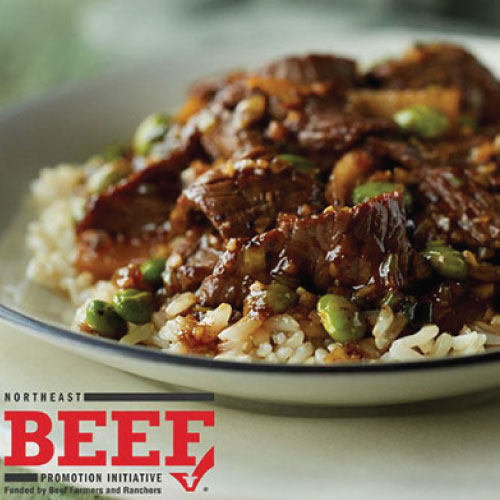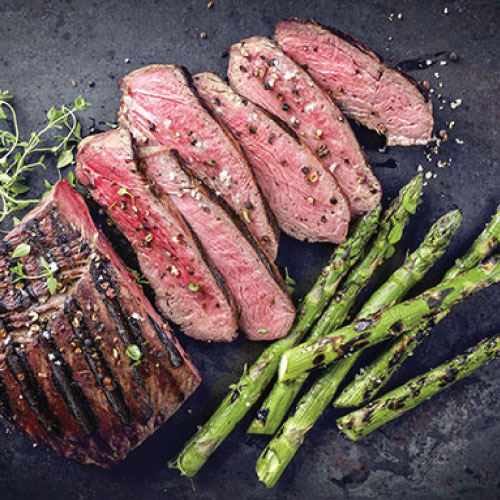
Is Your Beef Grass-Fed or Traditional?
Author: be well™ with Big Y® Registered Dietitian Team
What’s Your Beef?
Beef is a wholesome and nutritious source of protein, making it a beneficial ingredient to a healthy meal plan. When shopping for beef, labels such as “grain-fed” may be a bit confusing. At first glance, “grass-fed” may seem pretty straightforward, but what does this mean when it comes to your health? Is grass-fed beef better for you than traditional beef? Let’s decode the label and explain the differences between grass-finished beef (e.g.: grass-fed) and grain-finished (e.g.: traditional) beef.
Who Regulates the Grass-Fed Label on Beef?

The U.S. Department of Agriculture (USDA) approves and regulates labels found on fresh beef based on specific criteria.1 For example, after meeting federal inspection criteria, grass-finished cattle, and their products, may receive the grass-fed label claim.
That said, since most beef products come from cattle raised traditionally, meaning they are grain-finished, you will not see a specific USDA label claim for “grain-fed.”
What Does “Finishing” Mean in Cattle Farming?
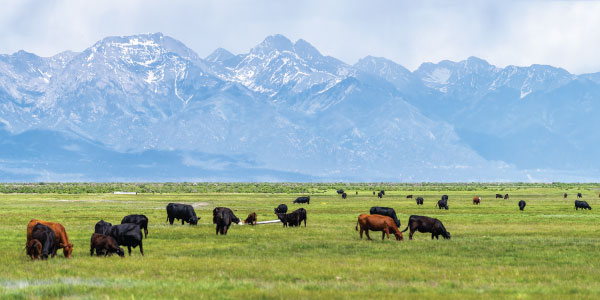
Most cattle spend the majority of their lives eating grass on pasture but the last 4 to 6 months of farming can be handled in different ways. These last 4 to 6 months are considered the finishing stage.
Grass-fed cattle spend their whole lives eating grass on pasture, foraging on open land. They may also eat hay or silage (e.g.: feed made from clover, grass or corn with stocks still intact).
Grain-fed cattle spend the majority of their lives eating grass on pasture as well, but they move to a feed yard during the finishing stage. During this time, traditionally-farmed beef cattle are fed a balanced diet of grains, corn, soy and local vegetation like potato hulls, sugar beets, bell peppers, onions, pumpkins and hay. The change in diet for traditionally-farmed cattle is done for them to reach production weight quicker than their grass-fed counterparts.
Is Grass-Fed Beef More Nutritious than Traditional Beef?
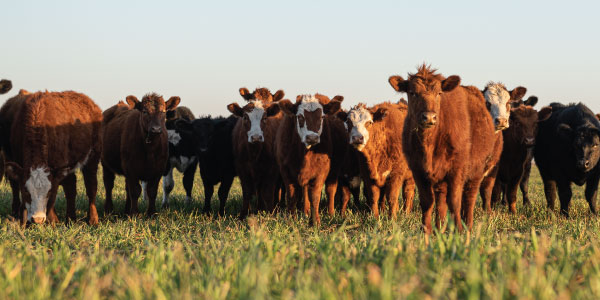
While some evidence suggests that grass-fed beef may have more nutrients than grain-fed beef, it is vital to acknowledge that the differences are not significant enough for most to notice in their meal plan.2
Specifically, grass-fed beef may be slightly higher in omega-3 fatty acid content than traditional beef. Regardless, the amount of omega-3 fats offered in grass-fed beef is not considered a significant source.3 For example, when compared to prominent omega-3-rich foods, like seafood, a 3-ounce serving of grass-fed ground beef provides slightly more than 35 milligrams omega-3 fats. The same serving size of salmon provides 860 milligrams.4
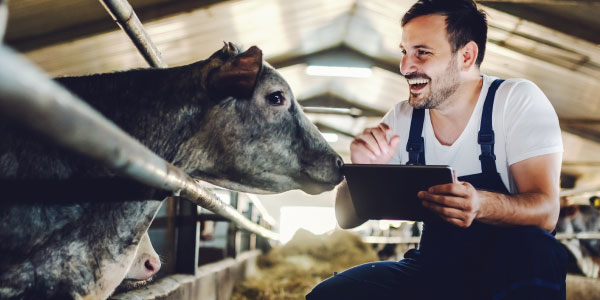
You may have also heard that grass-fed beef offers fewer calories and grams fat than traditional beef. Though this may be true, it is due to a technicality.
Grass-fed beef tends to be lower in calories and fat than traditional beef because the cuts typically sold for grass-fed beef are USDA Select grade. By definition, USDA Select grade beef is the leanest cut, with less marbling than other grades — grass-fed or not. Marbling refers to the amount of solid, white fat seen weaved throughout a cut of beef.
Traditional, grain-fed beef is typically graded USDA Prime and Choice. By definition, USDA Prime and Choice grade beef have more marbling and thereby flavor, juiciness and tenderness.
Beef Sustainability
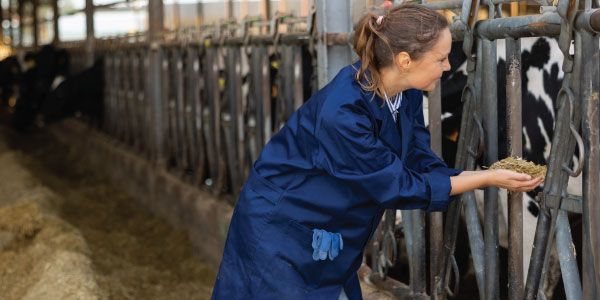
When it comes to the sustainability of beef production, U.S. cattle are raised by farmers and ranchers who do so in a responsible manner, which allows them to produce 18% of the world’s beef production with only 6% of the world’s cattle.5 In fact, U.S. beef farming has reduced its environmental “hoofprint” overall by more than 16% since 1977, due to feed and breeding. Neither the grass-fed nor traditional model of beef cattle farming is more superior when it comes to sustainability, since both systems have positive and negative effects on the environment.
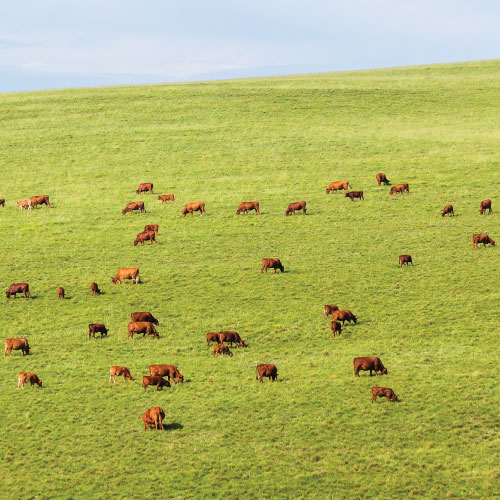
Grass-fed beef cattle farming contributes to sustainability by using forage from grasslands that sequester carbon. However, farmers typically need an additional year to bring grass-fed cows to the appropriate weight needed for market. These cattle also require more land for food. This longer length of production time affects the volume of methane each cow releases, leading to a potentially higher amount of greenhouse gas. As a consumer, it’s important to know the additional time and space needed to raise these animals directly increases the price of their products.
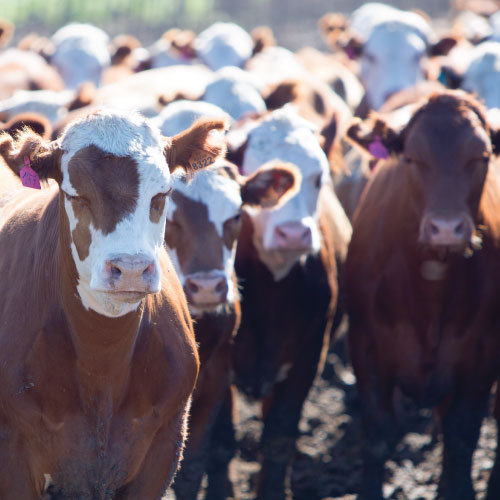
Although traditional beef cattle farming may require the highest energy output due to use of electricity and water needs, it tends to have a lower carbon footprint. With a shorter production timeline, and combining a high-energy feed with a smaller land footprint, grain-finished farming tends to create an overall lower amount of greenhouse gas emissions.
Regardless of the model of farming chosen, the U.S. beef industry, as a whole, has pledged to continue sustainability efforts and reduce greenhouse gas emissions by 10% per pound of beef farmed by 2030.
Beef and Health

Whether you purchase grass-fed or traditional beef, all beef can be a nutritious addition to your weekly meal plan. According to the Mayo Clinic, any high-quality protein incorporated in a healthy dietary pattern can help you meet nutrient needs, improve satiety and preserve lean muscle mass.6 Luckily, beef is a great-tasting source of high-quality protein that provides ample additional nutrition. For example, a 3 to 4 ounce serving of beef offers more than ten essential nutrients including iron and zinc.7 Looking to decrease your overall fat intake? Opt for lean cuts of beef like round and steaks such as tenderloin and round.
Buying Beef at Your Big Y Your Family Market

You have choices when it comes to the beef you buy. Big Y’s trusted butchers are trained to give you advice on the best cuts of meat for your recipes. They’re ready to customize meat to your preferred thickness and cut. After all, we understand choosing the right protein source will inspire you to create a culinary masterpiece that is delicious, satisfying and full of nutrition.
Ready to be inspired?
Create delicious meals spotlighting beef (grass-fed OR traditional! 😉) with these recipes:
1 Daley, C. A., el al. A review of fatty acid profiles and antioxidant content in grass-fed and grain-fed beef. Nutrition Journal. 9(1). https://doi.org/10.1186/1475-2891-9-10. Accessed August 6, 2023.
2 American Heart Association®. Picking healthy proteins. https://www.heart.org/en/healthy-living/healthy-eating/eat-smart/nutrition-basics/meat-poultry-and-fish-picking-healthy-proteins. Accessed August 7, 2023.
3 Food Safety and Inspection Service. Beef from farm to table. http://www.fsis.usda.gov/food-safety/safe-food-handling-and-preparation/meat/beef-farm-table. Accessed August 7, 2023.
4 Harvard: School of Public Health. Omega-3 fatty acids: An essential contribution. The Nutrition Source. September 14, 2023. https://www.hsph.harvard.edu/nutritionsource/what-should-you-eat/fats-and-cholesterol/types-of-fat/omega-3-fats/. Accessed September 27, 2023.
5 Klopatek, S. C., el al. Grass-fed vs. grain-fed beef systems: Performance, economic, and environmental trade-offs. Journal of Animal Science. 100(2). https://doi.org/10.1093/jas/skab374. Accessed August 6, 2023.
6 Mayo Foundation for Medical Education and Research. Your guide to the leanest cuts of beef. https://www.mayoclinic.org/healthy-lifestyle/nutrition-and-healthy-eating/in-depth/cuts-of-beef/art-20043833. Accessed August 5, 2023.
7 Nogoy, K. M., et al. Fatty acid composition of grain- and grass-fed beef and their nutritional value and health implication. Food Science of Animal Resources. 42(1), 18–33. https://doi.org/10.5851/kosfa.2021.e73. Accessed August 7, 2023.
Published 11/4/2023



